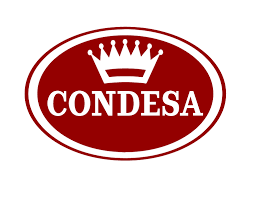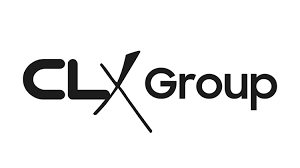In search engine optimization, some featured snippets could be seen as the holy grail of rankings. The Featured Snippets are a great opportunity for many websites. Highlighted fragment optimization can bring your website to the top of the search results by slightly modifying the content of your page.
Discard backlinks, performance and site architecture (just kidding). With the Featured Snippets settings presented here, you can avoid them all to get to number 1 without worrying about all these other factors.
Think of this as a checklist to review as you think about how to modify the highlighted snippets of your keyword set.
What is a Featured Snippet?
A featured snippet is a two or three sentence summary of the text that appears in Google at the top. The featured snippets provide a response to a user’s query directly in the search results. Receiving a featured snippet can direct more traffic to a specific page.
The steps for promoting featured snippets are as follows:
- Adding a “What is it” header
- Use an “is” sentence structure.
- Define the topic completely
- Matches the format of the highlighted fragment
- Do not use your brand.
- Don’t use first-person language
- Scale Cuts
- Prioritize when you are in the top five
- Iterate your optimizations
The featured snippet seems to work with a simpler algorithm than Google’s “main” one. The presented fragment is much more influenced by simple settings on the page that define the topic very clearly for the users.
Featured snippets and voice search
Also, please note that one of the objectives of the featured snippet is to help speed up voice searches. Google reads featured snippets when users perform voice queries on Google mobile or home devices.
This means that the featured snippets presented should always be useful in this context. When optimizing the highlighted fragments, it makes sense to ask: “How would my answer sound if I read it in the Voice Search?
The types of featured snippets
By optimizing for featured snippets, you can see that there are different types. It is important to understand these different types so that you can understand how to structure your content for optimization. The most common types are the following:
- Paragraph: two or three text phrases extracted from an HTML element <p>.
- Table: a table containing information extracted from an HTML <tab> element.
How to optimize the selected fragments
1. Add a “What is it” title …
To start optimizations on featured snippets, you must find a place in your content to add a “What is [keyword]” header tag. This sends clear signals to Google that the text that could be used for the featured snippet is still pending.
By adding this section, Google will get a direct hint of the text that you can include in the featred snippet.
2. Use the structure of the “is” expression …
When optimizing for the featured snippet, it is very important to include an “is” statement. This means that the first sentence should begin with the structure: “[Keyword] is”.
When optimizing your pages for the highlighted fragment, make sure that your first sentence follows this format. If you use an “is” statement, you should find that a higher percentage of your optimizations will result in the highlighted fragment.
3. Define the topic completely in 2-3 sentences.
The featured snippets are designed to give users as much information as possible about the topic in a short period of time. This means that the content you modify should try to describe the topic as completely as possible in two or three sentences. It is extremely important that this rule be accurate.
- The first sentence should define the topic
- The second and third sentences should describe 2 or 3 facts that should be known about the subject.
- Try not to use strange expressions in your definition.
4. Adjust the format of the featured snippet.
There are different types of fragments. These are:
- Paragraph (most common)
- Numbered and bulleted list
- Table (less frequently)
This rule is very simple. Regardless of the type of fragment you see in the SERP, it is consistent with that type of content.
5. Never use your brand in the highlighted clipping text
This is an error that we keep seeing when optimizing for the presented fragment. A company will execute rules 1 to 4 well, but will use a language that makes the result unsuitable for the presented fragment.
6. Do not use the first-person language
As in rule 5, using the language in the first person can be a mistake due to the effects of voice search.
7. If possible, scale the selected fragments
Over the years, we have seen some interesting behavior of bulleted lists with fragments. However, there are no specific bulleted lists on the page.
Instead, this page will be set as the default e-commerce category page. What Google apparently gets from the presented snippets are the lists of individual products on the category page.
These all appear to be formatted as H3 tags. This shows us that, in some results, the submitted snippets may be due to Google verifying the information in the header tag.
8. Prioritize the opportunities that will place you in the top 5
Previous studies have shown that classification is important when it comes to reclaimingfeatured snippets. Simply put, the higher the rank, the greater the chance of claiming one.
An earlier AHREF study showed that the results of the ranking in the first position had a 30.9% chance of getting an eye-catching cut. Rankings 2 and 3 had a 23.5% and 15.9% probability, respectively.
9. Iterate your optimizations
You followed the steps above. They have fantastic content on the page that clearly describes the topic under a special “What is it” heading at the top of the page. They were also careful to stay away from trademarks or first-person terminology. Take the optimizations into production and wait for Google to re-index the content.
When Google finally indexes your new changes, you discover that your page has not yet generated the highlighted piece.
This is not the time to stop optimizing. Instead, repeat your approach and try again. Many of the presented snippets may require several iterations.
Conclusion
These rules can provide you with a set of guidelines to follow when optimizing the featured snippets. Remember, it is extremely important to use an “is” statement and to completely define the topic in two or three sentences. By following the above rules, you can greatly improve the amount of highlights you can get on your website.
This post is also available in:
 Español (Spanish)
Español (Spanish)















